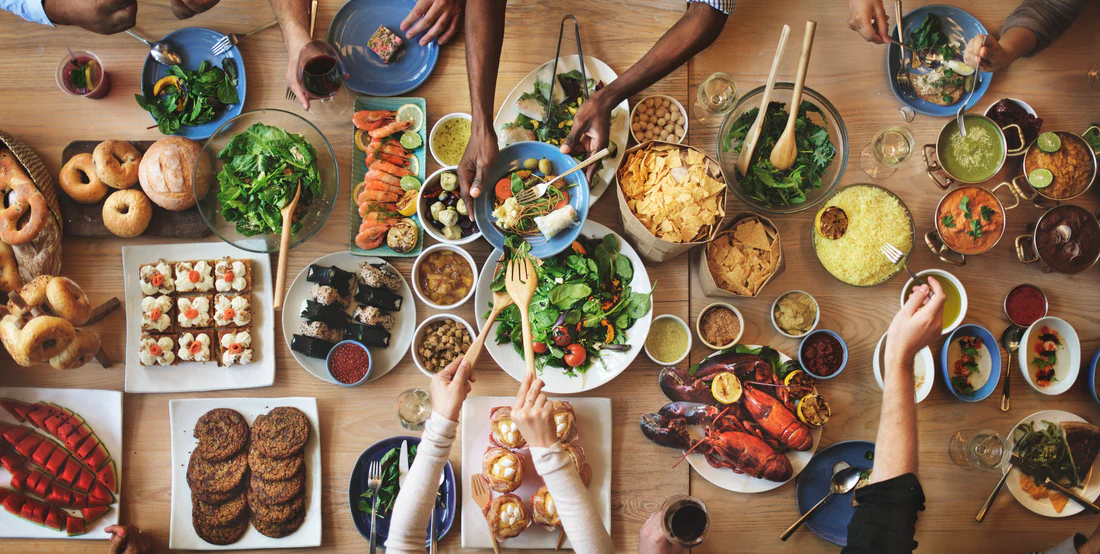Global Cuisine Fusion – Cross-Cultural Flavor Experiences
January 30, 2024Fusion restaurants serve as culinary playgrounds where chefs showcase their creativity by creatively combining disparate ingredients and techniques into delectable culinary masterpieces. Such establishments allow patrons to embark on an intercontinental voyage of flavor.
Diners often prefer experiencing international flavors in familiar forms such as sushi burrito or Indian-inspired pizza, possibly because it allows them to feel more at ease with unfamiliar dishes.
The Trend
Fusion cuisine has quickly become a global trend that transcends culinary borders by celebrating the interconnection of disparate cultures through shared culinary heritage. This revolutionary movement allows chefs to experiment by merging disparate ingredients and cooking methods into groundbreaking culinary combinations that appeal to sophisticated diners.
This trend’s roots can be traced back to ancient trade routes and migration, when spices, herbs and ingredients were exchanged across borders through trade routes and migration. Over time, different culinary traditions combined these elements in recipes that have now become globally celebrated dishes.
Blending diverse culinary traditions is becoming more prevalent at restaurants and home kitchens alike, where dishes such as sushi pizza, chicken tikka masala in spaghetti sauce or Tex-Mex burritos may be served. However, care must be taken to avoid cultural appropriation, whereby marginalized communities’ cuisine is whitewashed and presented as authentic to mainstream consumers resulting in disjointed and disappetizing meals for consumers.
Popular Fusion Recipes
Culinary fusion is an intriguing testament to our increasingly interdependent world. Not only does this trend offer delicious samples from various food cultures, it also fosters cross-cultural appreciation and understanding.
Fusion recipes include sushi burritos, Korean barbecue tacos and Indian-inspired pizza – dishes which showcase the creativity and adaptability of chefs who dare to challenge traditional culinary norms.
These global mashups can be traced back to gradual cultural exchanges across international boundaries. For instance, Tex-Mex cuisine reflects migration communities from the US Southwest while Pacific Rim cuisine represents its influence from islands within its region.
As always, however, it’s essential to be wary of instances in which culinary fusion can become problematic. When non-ethnic individuals whitewash ethnic ingredients or recipes for financial gain without prior consultation with ethnic communities this could constitute cultural appropriation – a concern which movements such as Slow Food seek to address.
Cultural Food Mashups
As our world becomes more culturally accepting, chefs are pushing the limits of global cuisine fusion with innovative dishes like sushi tacos and tandoori burgers that demonstrate just what is now possible.
Diners today are more willing than ever before to try new foods, leading them to explore innovative cuisine. Instant noodle dishes have become increasingly popular and can now be found stuffed into sandwiches, burgers and cupcakes; similarly North American ingredients have become staples in Asian recipes such as wontons made with baked pumpkin pie mix or salmon wrapped in cookie dough wontons.
Chefs aim to strike the appropriate balance when creating fusion dishes, respecting both flavors and techniques of each cuisine they incorporate into a single plate. This approach to fusion is known as “smashing.” For instance, Sapphire’s Southeast Asian Citrus Sope with Baby Banana Almond Tempura represents this form of merging without diluting either tradition. Other examples of “smashing” fusion can include Cajun-Asian dishes like blackened shrimp served over stir-fried veggies or unique gumbo with Asian-style katsu sauces.
The Influence of International Cuisines on Mainstream Dining
As people become more connected globally, chefs have taken to combining ingredients and cooking techniques from different cultural cuisines in innovative culinary experiments that combine flavor profiles while offering something new and delicious to diners around the world.
As a result of this culinary mashup trend, traditional international dishes have never been more accessible and diners more willing than ever to experiment with global flavors beyond spaghetti and meatballs, burritos, or chop suey.
Immigrants have also contributed significantly to this shift. By adapting their recipes for American palates, immigrants incorporated their culinary heritage into mainstream dining through cooking classes and restaurants such as San Francisco’s Le Lan (Korean-American), Vancouver’s Kissa Tanto (Italian-Japanese), and Toronto’s Elvita’s (Latin American-Italian). Through cultural exchange of ingredients has come about an exciting food landscape in which fusion flourishes.



